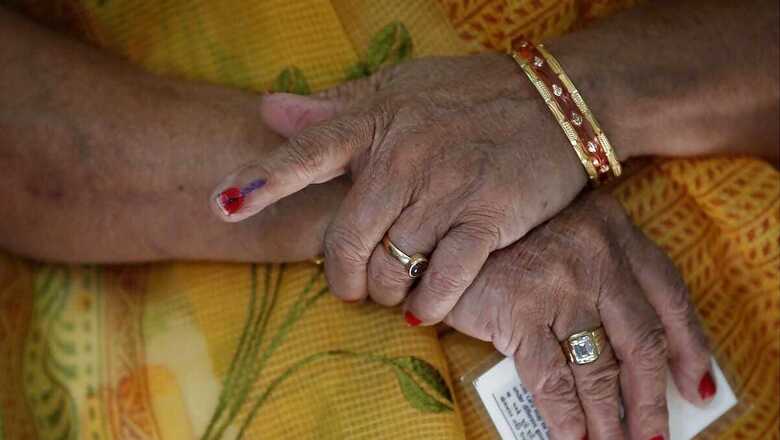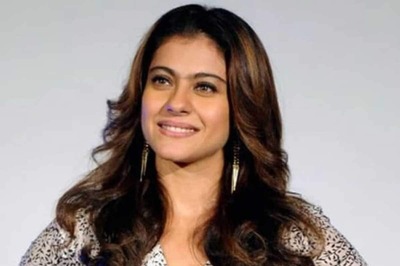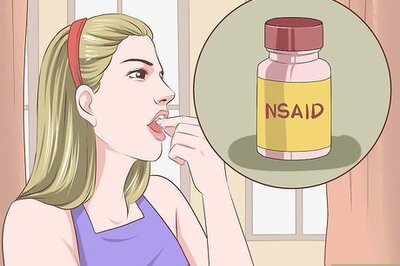
views
Former chief election commissioner Navin Chawla on Wednesday said the central government’s ‘one nation, one election’ proposal is not impossible to achieve but not easy either.
The central government has formed a high-level committee of eight members on ‘one nation, one election’, which is headed by former president Ram Nath Kovind. It is examining holding simultaneous elections to the Lok Sabha, state assemblies, municipalities and panchayats, keeping in view the existing framework under the Constitution and other statutory provisions.
Chawla said the first intervention in the matter came in 2015 when a parliamentary panel called the Election Commission of India for evidence, to which the poll body said there was a possibility that it could be done. “It did not rule it out. I think it first began there,” he told Milan Vaishnav, director at the Carnegie Endowment for International Peace, and journalist Sunetra Choudhury at the Hindustan Times Leadership Summit.
Calling the ongoing debate over the “complex issue” of ‘one nation, one election’ “complicated”, the former chief election commissioner (CEC) said from a strictly election point of view, there needed to be more infrastructure in terms of hardware and the constituencies would have to be increased.
“…they will practically double, although that happens when a general election coincides with four or five assemblies. But when you are doing the entire country then the need for hardware, the need for district magistrates for returning officers for the whole bandobast of the pyramid below that the EVMs, VVPATs. All that is not impossible, but it’s not easy,” he told Hindustan Times.
When Lok Sabha and assembly elections are held simultaneously in some states, people cast their vote in two separate EVMs. In the previous Lok Sabha elections, there were 12.50 lakh polling stations. The ECI now requires around 15 lakh control units, 15 lakh VVPAT units and 18 lakh ballot units for 12.50 lakh polling stations.
According to sources involved in the election process, the poll body will require at least 30 lakh electronic voting machines (EVMs), and roughly one-and-a-half years to prepare for simultaneous elections and their smooth conduct.
An EVM comprises one control unit, at least one ballot unit and one voter verifiable paper audit trail (VVPAT) unit. Sources said the ECI will require at least 30 lakh control units, about 43 lakh ballot units and nearly 32 lakh VVPATs for simultaneous polls, taking into consideration the reserve units kept for replacement in case of any malfunction or damage. Sources said there is a shortfall of nearly 35 lakh voting units — control units, ballot units and VVPAT units — for the simultaneous conduct of Lok Sabha and assembly polls.
The ECI had informed the law commission a few months ago that it will also require adequate warehousing facilities to store the EVMs. Two public sector undertakings – ECIL and BEL – who manufacture EVMs will also need to be informed well in advance. In addition, the semiconductor industry should also be stable to cater to the enhanced demand.
The law commission is working on a report on holding simultaneous elections, and had organised an interaction with the poll body on its requirements and challenges for holding synchronised polls. Sources aware of the interaction said much would depend on the number of polling stations set up when such an exercise takes place.
“One of the big things in the election commission is not just that you have a district magistrate and the pyramid, but a lot of intense training that goes into it. So, of course, that would also multiply manifold, and I’m not talking about costs. Costs can be met, but the election pyramid would have to almost double, if not triple, to be able to do these elections simultaneously. So not impossible but not easy,” he was quoted as saying in a report published by HT.
Milan Vaishnav, while talking about the massive expenditure for multiple elections every year, told HT: “I think you have to break down the costs into two different buckets or categories. So there are the costs borne by the government for the conduct and implementation of the elections and then there’s the money that parties and candidates and their supporters are spending. Let’s start with the general government expenditure. So the estimates out there are that, on average, a general election costs to put on around Rs 4,000 crore, and a state election in a medium to large state would be Rs 300 crore. And you say maybe it’s a little bit higher now due to inflation and increased population and so on and so forth. That does not strike me frankly as a very large number.”
An EVM has a shelf life of 15 years. While there is no official estimate on how much these voting units cost, when calculated as per the previous procurement rates, the total cost for one crore units will be in excess of Rs 15,000 crore, including over Rs 6,500 crore for VVPAT units. The cost can go even higher if local body polls are also held together with Lok Sabha and assembly polls.
Chawla, however, said there were disadvantages to holding simultaneous polls. It would also not be cheaper if elections were conducted together, he said. “There are disadvantages to doing them together. One is that you know it’s a huge country and, even when we do a general election, we require at least 2,000 senior officers as observers, joint secretaries and above… When you quantify this into a general election and simultaneous elections, then everybody has got used to demanding observers and central forces and, how exactly and where they can come simultaneously, is something that if I were in the election commission would beat me; I wouldn’t know where to get them,” he told HT.
(With PTI inputs)




















Comments
0 comment